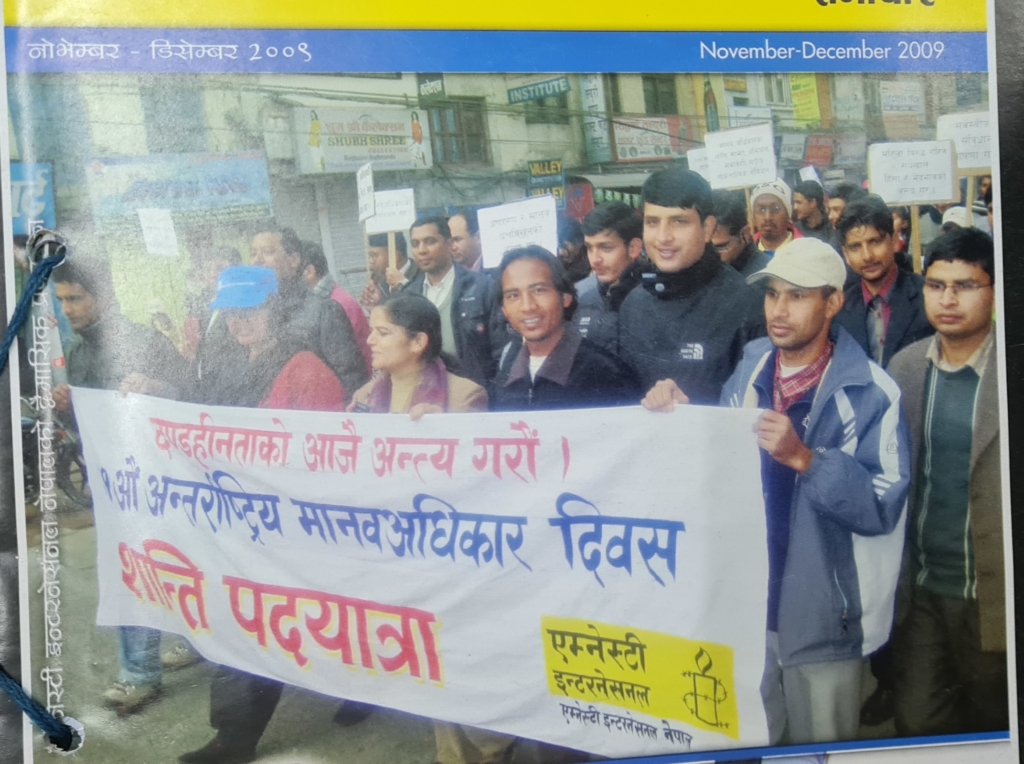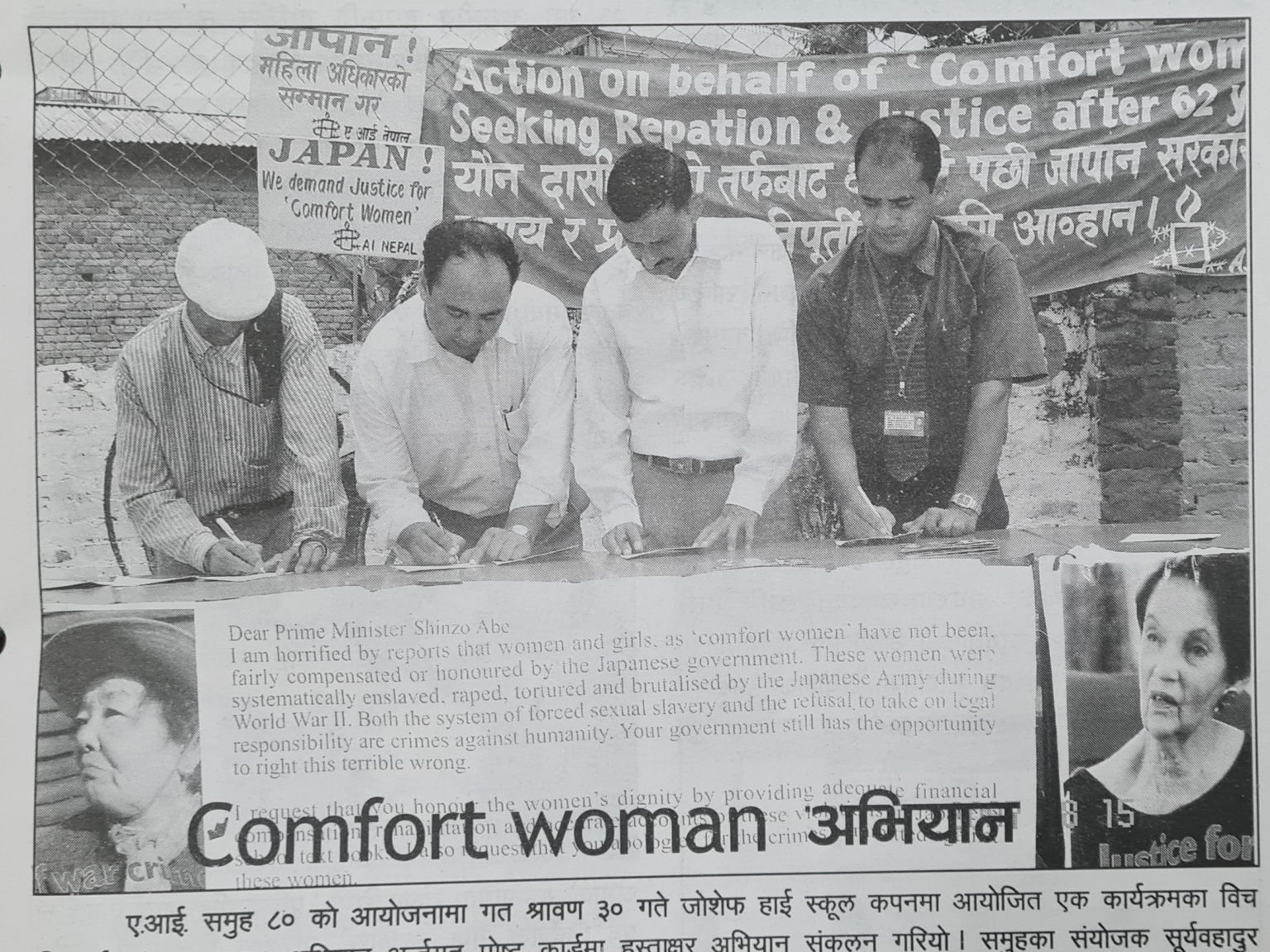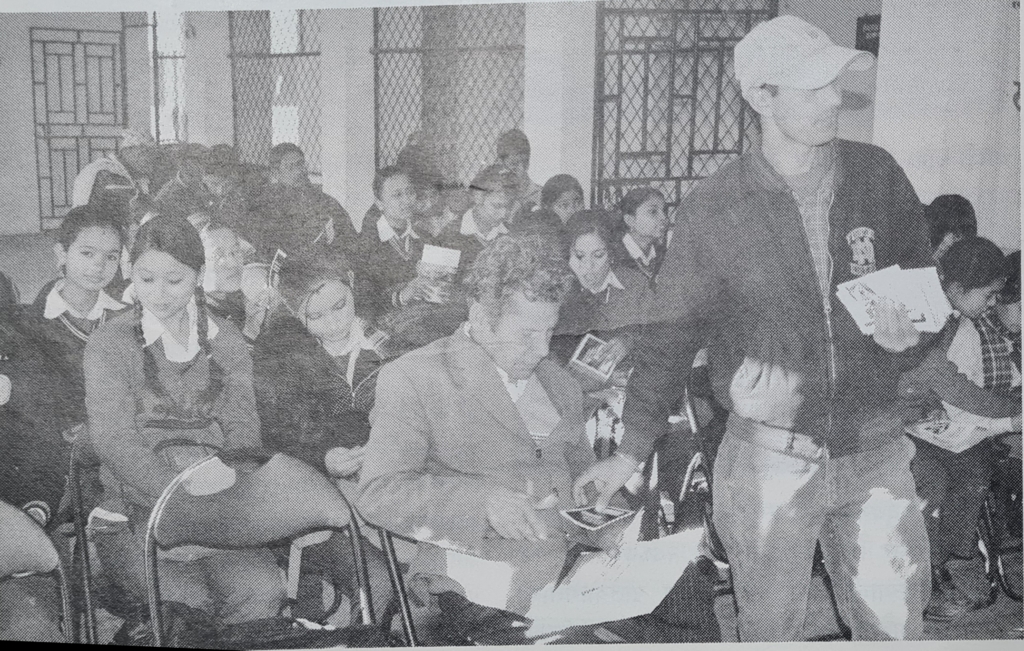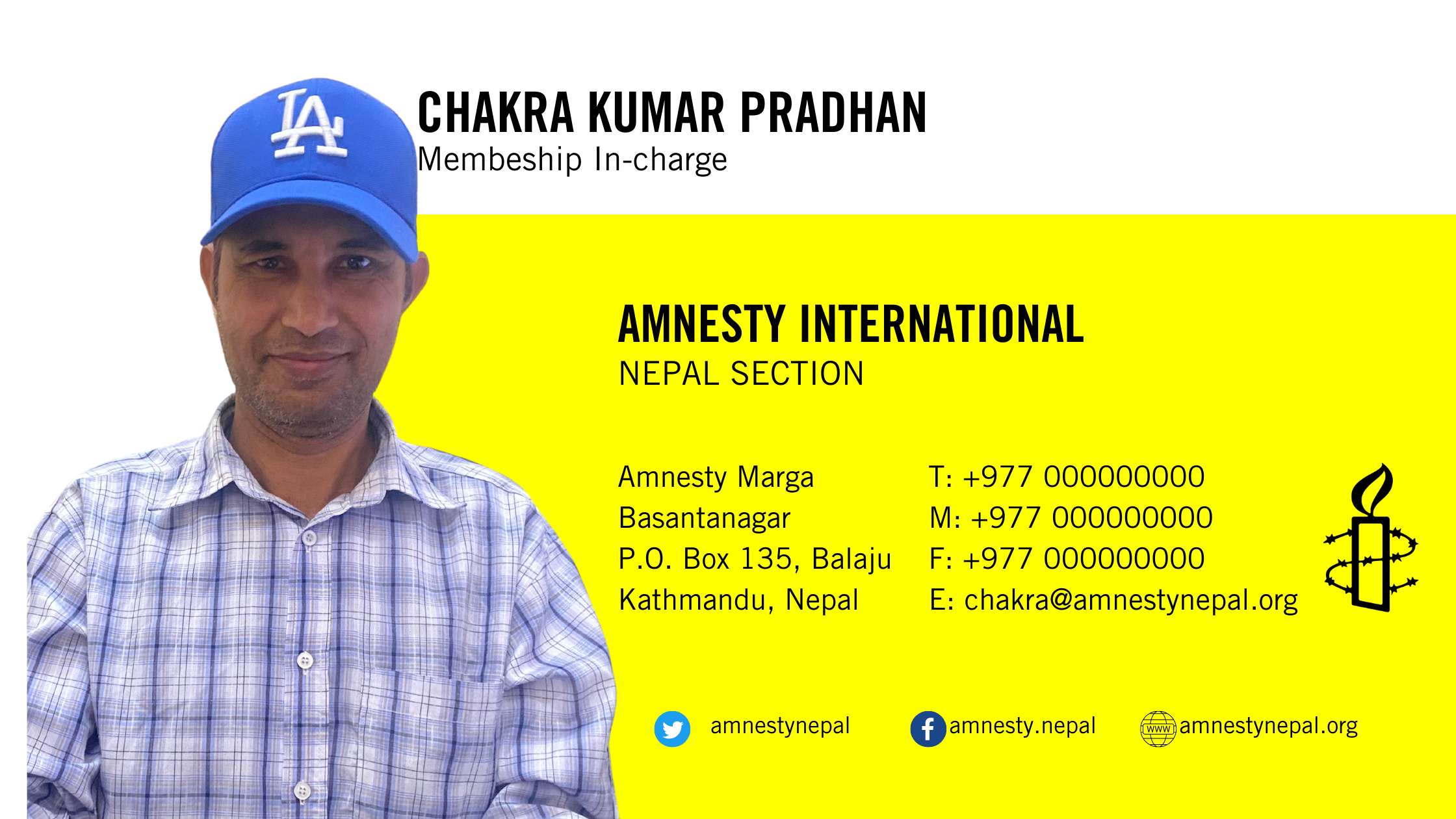I joined Amnesty International Nepal as an employee in 1996, which is three years after the organization was recognized as a section for the second time in 1993. I was 24 years old then.

I joined Amnesty Nepal as an assistant for a three-year-long project called ‘Teaching for Freedom’. The project aimed at raising awareness about basic human rights among the people. It included human rights trainings for the people from all walks of life, including schoolteachers, women, young people, and police.
That time, Amnesty Nepal was the first organization for lobbying with the government to incorporate human rights education in formal curriculum. It’s good to see that the high school textbooks nowadays have some basic level human rights contents although they need upgrading.
We were arrested many times while collecting petitions as a part of our different campaigns. With an objective to spread awareness among people about human rights, Amnesty Nepal performed street dramas and went on a Caravan, which was a journey from Mechi to Mahakali. The street dramas and the nationwide caravan were successful in bringing awareness about the rights of migrant workers and human rights to thousands of people.

Another unforgettable programme with impact is the publication and dissemination of Campaign Newsletter. The Campaign Newsletter was printed out and distributed freely among the members and was sent to 2000 secondary schools across the country. The publication consisted of different contents related to human rights education, opinions, updates, and reports of the activities carried out by Amnesty and its affiliate groups. The students and teachers, who read the bulletin in the schools, informed us via letters and phone calls that it was informative and useful to them.

I worked for Amnesty Nepal in the capacity of a project assistant for three years, and an assistant for around a decade. In 2002, I was assigned a different role as the dispatch in-charge. I continued this job for one and a half decade. While I was working as the dispatch in-charge, I also assisted in managing the membership. After the membership officer left the organization in 2016, I took over the role of the membership in-charge.

Over two and a half decades of my employment with Amnesty Nepal, I have witnessed the organization enduring several ups and downs. On some occasions, I saw Amnesty Nepal very vibrant, on some other occasions, I saw it mired in different crises leading it to the brink of closure. Let’s keep the drawbacks aside. When compared to the past, Amnesty Nepal has now made great leaps. Currently, it has its own building constructed in its own land. I am hopeful that Amnesty Nepal will continue to reform, progress, and make impacts on the ground.
Amnesty Nepal continues to grow, tackling various obstacles. The membership of Amnesty Nepal was open for youth for the first time in 2006. After one year, youth networks constituting youth members were formed. In 2016, two youth members (one female and one male) joined the National Board.
Currently, Amnesty Nepal has three types of membership: Group, Youth Network, and Individual/supporter. As of now, there are 86 groups, four groups-in-formation, and 57 youth networks throughout the country. As of writing this blog, a total of 7,169 members are affiliated to Amnesty Nepal.
As the longest serving employee, I have witnessed a sea change in the governance of the organization with participation of a large number of representatives and youth members taking up the leadership roles in the recently held 30th general meeting. With the new changes institutionalized through the general meeting, and with prospective changes as we move ahead, I am confident that Amnesty Nepal will become more democratic and vibrant in the days to come.
About the Author/s:


